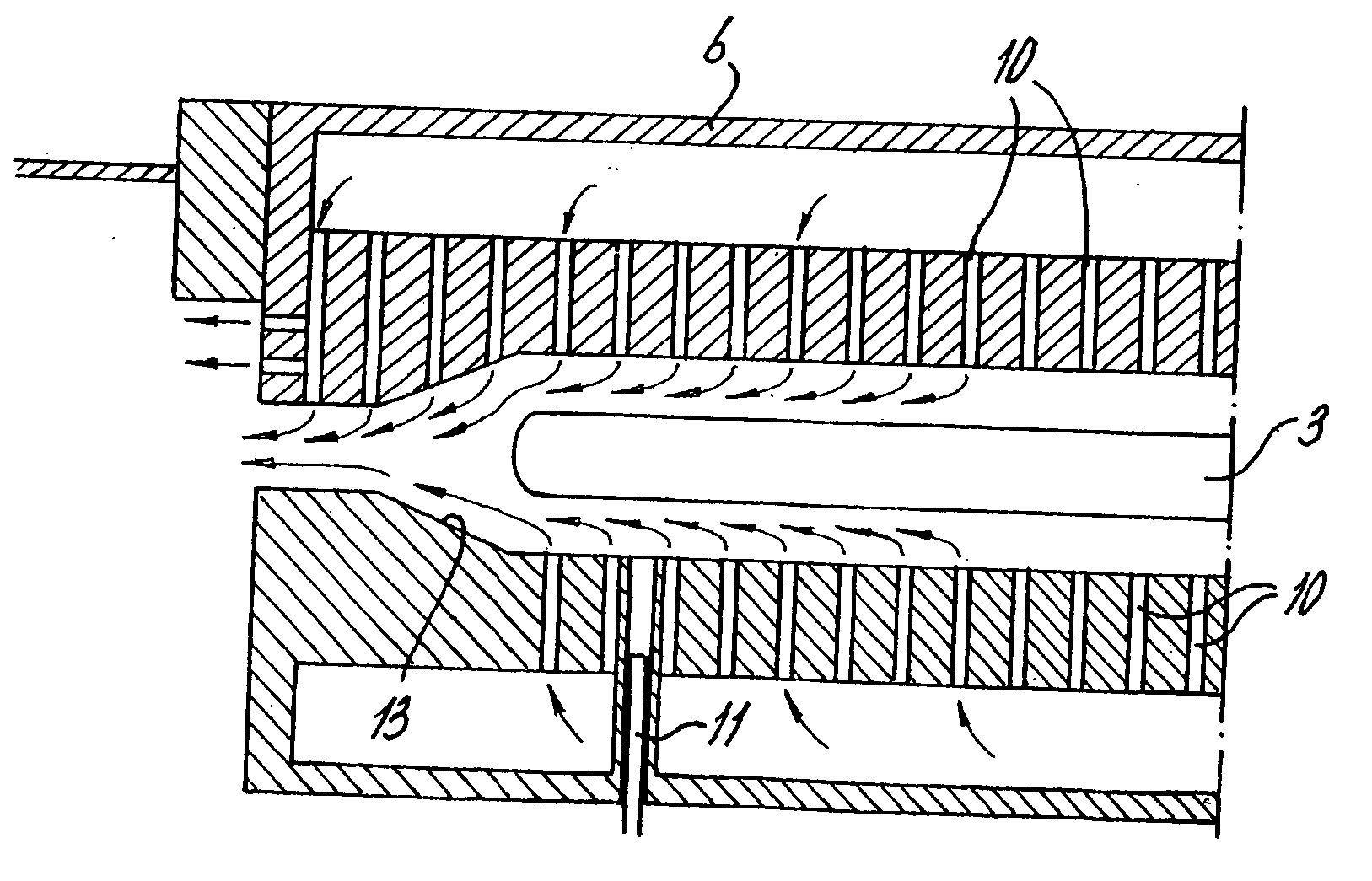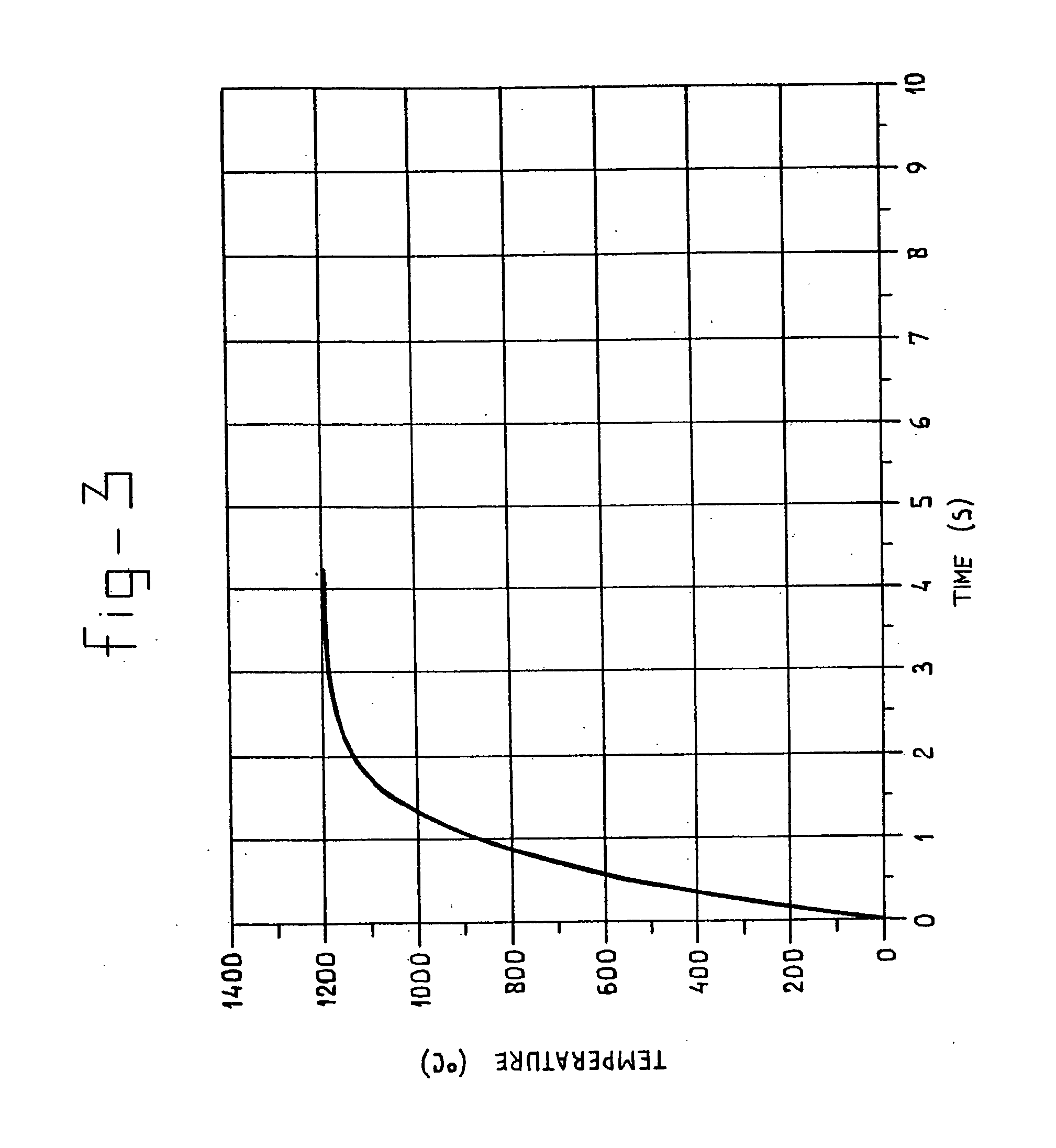Method and apparatus for supporting a semiconductor wafer during processing
a technology of semiconductor wafers and supporting devices, applied in electrical devices, chemical vapor deposition coatings, coatings, etc., can solve the problems of difficult control, difficult to heat a semiconductor wafer, and a relatively long time to heat a wafer, etc., to achieve the effect of short tim
- Summary
- Abstract
- Description
- Claims
- Application Information
AI Technical Summary
Benefits of technology
Problems solved by technology
Method used
Image
Examples
Embodiment Construction
[0031] In FIG. 1, the apparatus according to the invention is indicated in its entirety by 1. This apparatus is provided with an inlet 4, which can be connected, in a manner not shown in more detail, to a ‘load lock’ or a cluster system for further treatment of semiconductor substrates.
[0032] The actual apparatus according to the invention, consisting of top and bottom or first and second side sections 6 and 7, respectively, is accommodated in a pressure vessel 2 for carrying out a process in a specific environment or under elevated or reduced pressure.
[0033] The first side section 6 is joined rigidly to the pressure vessel 2. A heating coil 8, which is connected to a control 5, is mounted inside the first side section. A gas supply line 12 is also present, which gas supply line is connected to the gas feeds 10 which comprise a number of uniformly distributed passages.
[0034] It must be understood that in practice a very much larger number of passages will generally be used, which...
PUM
| Property | Measurement | Unit |
|---|---|---|
| temperature | aaaaa | aaaaa |
| thickness | aaaaa | aaaaa |
| thickness | aaaaa | aaaaa |
Abstract
Description
Claims
Application Information
 Login to View More
Login to View More - R&D
- Intellectual Property
- Life Sciences
- Materials
- Tech Scout
- Unparalleled Data Quality
- Higher Quality Content
- 60% Fewer Hallucinations
Browse by: Latest US Patents, China's latest patents, Technical Efficacy Thesaurus, Application Domain, Technology Topic, Popular Technical Reports.
© 2025 PatSnap. All rights reserved.Legal|Privacy policy|Modern Slavery Act Transparency Statement|Sitemap|About US| Contact US: help@patsnap.com



